In high school and college, I always noticed when the Red Cross bus would pull up on campus and open its doors for blood donors.
Somehow, even though I wanted to donate, it never seemed like good timing. There's a lot you need to know before you donate, and if I'm being honest, I was probably a little scared.
Despite all my past excuses, I recently decided it was time to finally get my act together and donate blood.
I've never been afraid of needles or getting blood tests at the doctor's office, but I've never donated before. It seems like a scary, unknown process.
Because I've decided to embrace trying new things, I thought it was about time for me to do something that could benefit other people — and that's how I settled on donating blood.
According to the American Red Cross, there are five steps to donating blood: first, the donation itself; second, processing the blood; third, testing the blood; fourth, storing the blood; and fifth, distributing the blood to patients who need it.
The Basics Of Donating Blood

There's a lot to know about donating blood, but the most important thing to know is just how significant a blood donation can be.
According to the American Red Cross, someone in the US needs blood every two seconds.
Additionally, donated blood is not just used for trauma patients, it's actually used mostly for cancer patients, blood loss due to surgery, and anemia treatments.
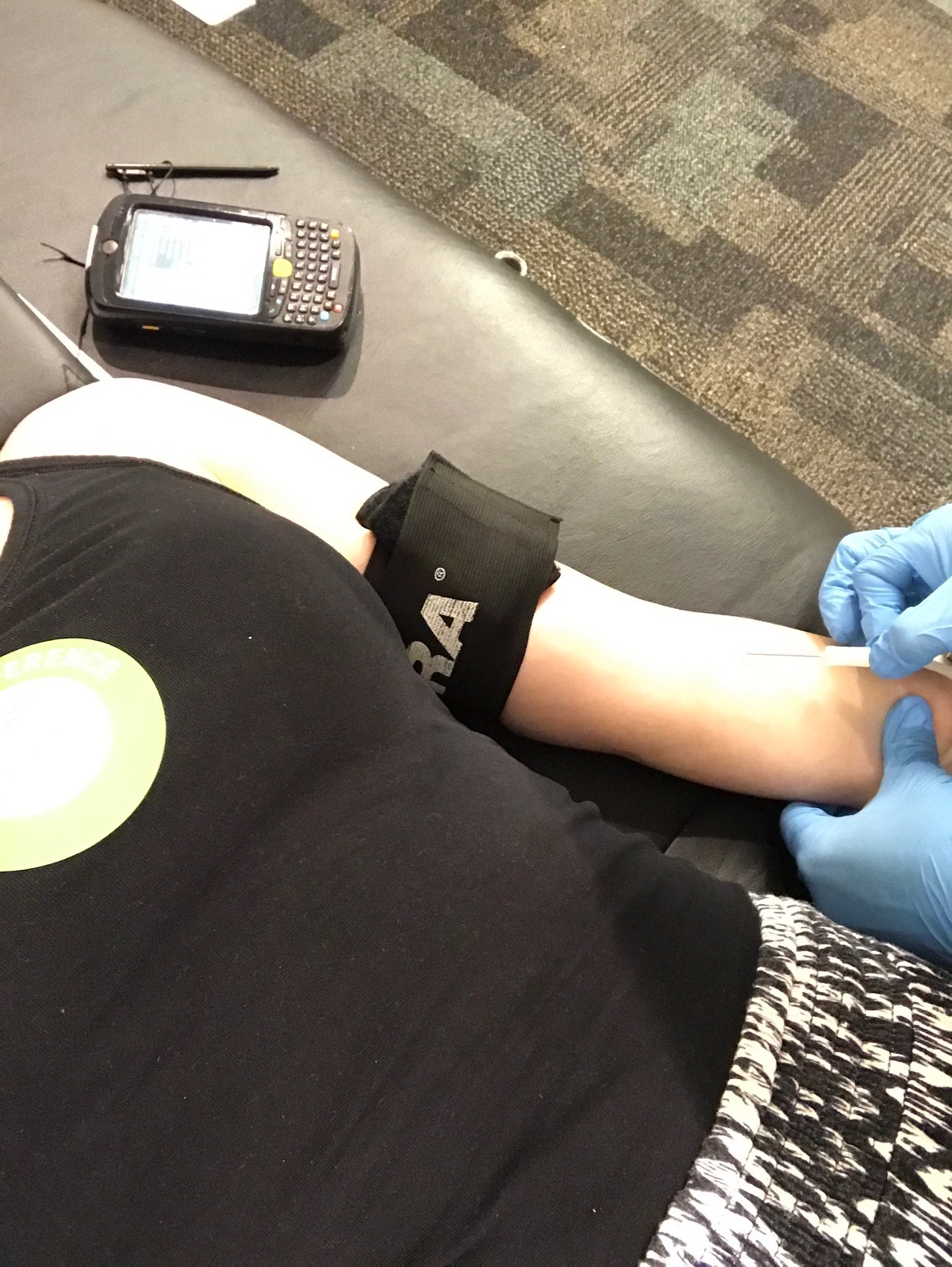
Unfortunately, blood cannot be manufactured — the only way patients who need blood can get it is from generous donors.
Even though around 38 percent of the population is eligible to donate, less than 10 percent of eligible blood donors actually do it.
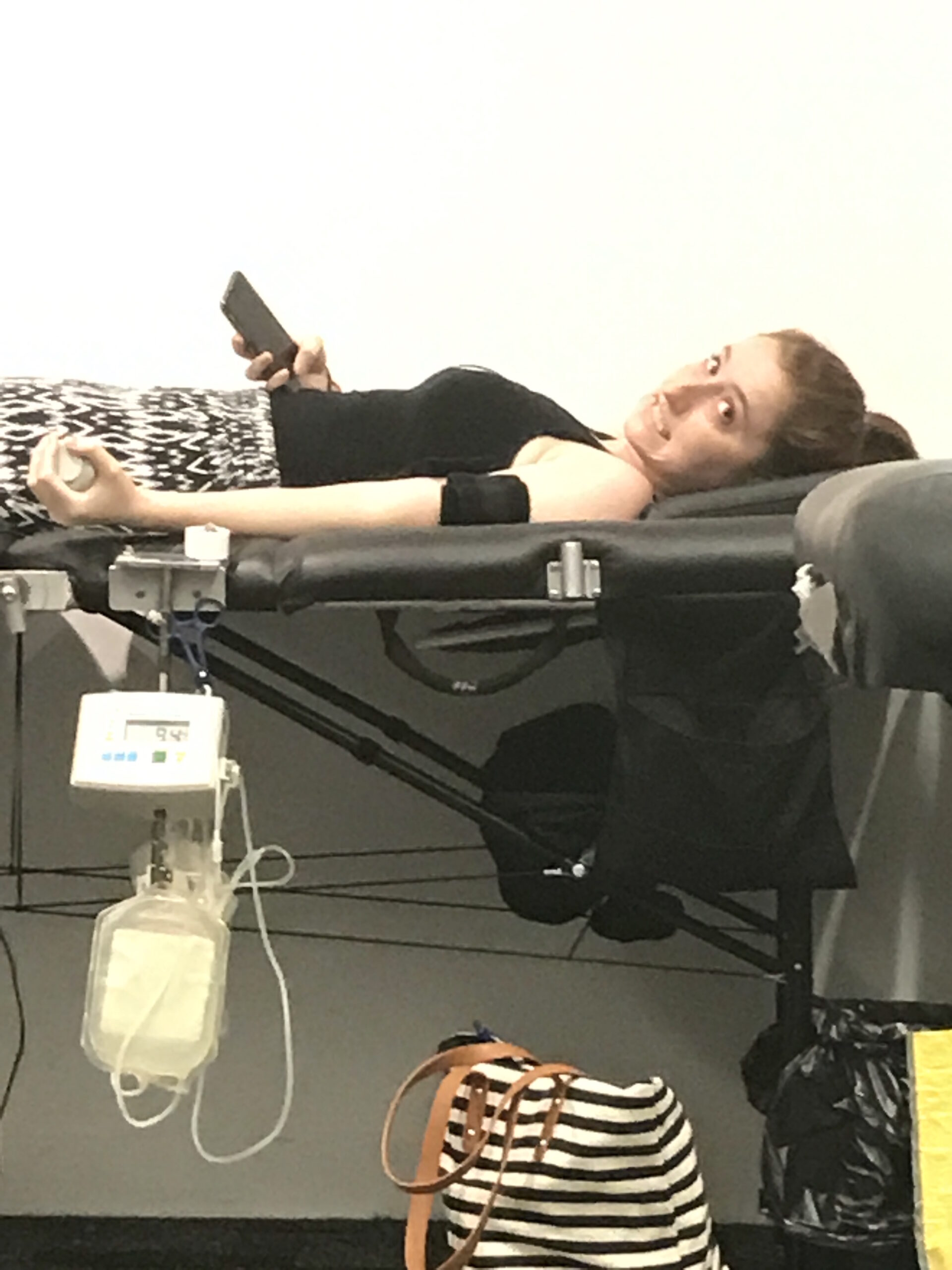
It's really important for donors to know that donating blood is a completely safe process.
Most adults have around 10 pints of blood in their bodies; when you donate, they take roughly one pint.
Where To Donate Blood

Blood drives happen every single day all over the world. They're often held at high school and college campuses, but there are also blood donation centers in every state.
If you want to find out where to donate blood in your area, you can search online or check the American Red Cross website.
Rules For Donating Blood
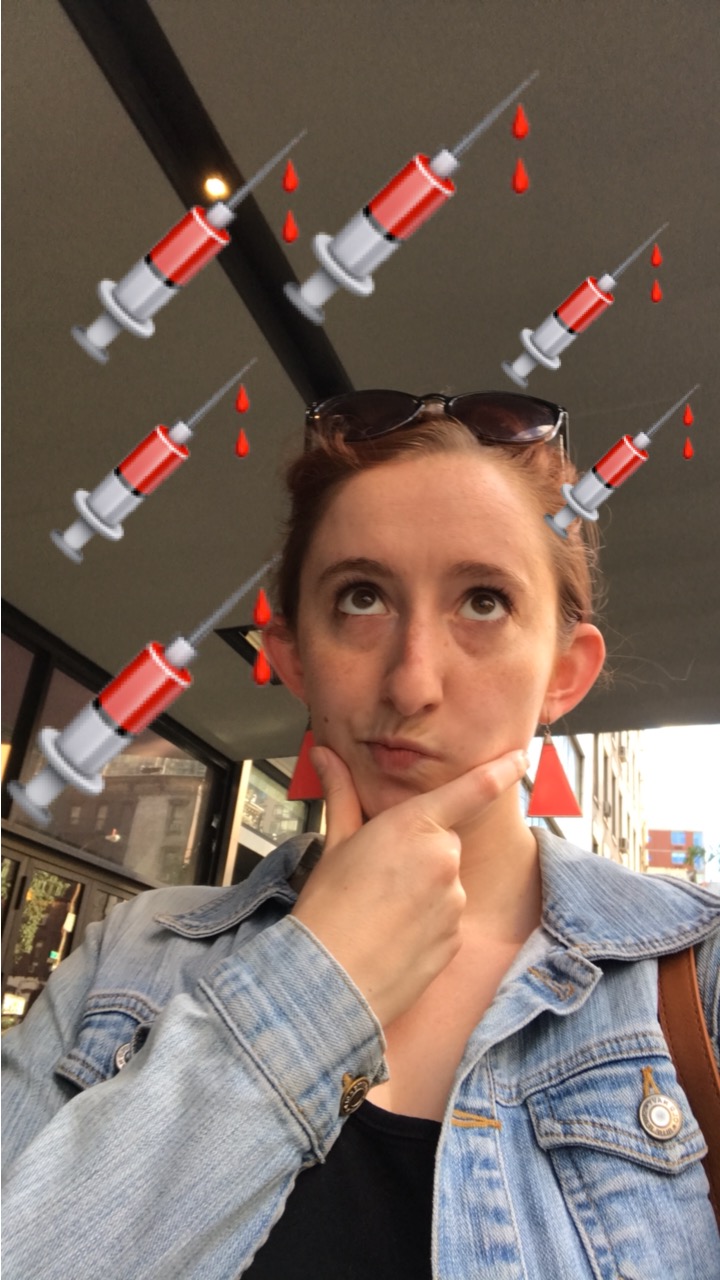
To donate blood, there are a few requirements.
First, you have to be in good general health and be feeling well on the day of your donation.
You also have to be at least 17 years old and weigh at least 110 pounds.
There are more specific rules, including not traveling to certain places within a year of donation, but you'll find out about that when you go online to register.
Frequently Asked Questions About Donating Blood
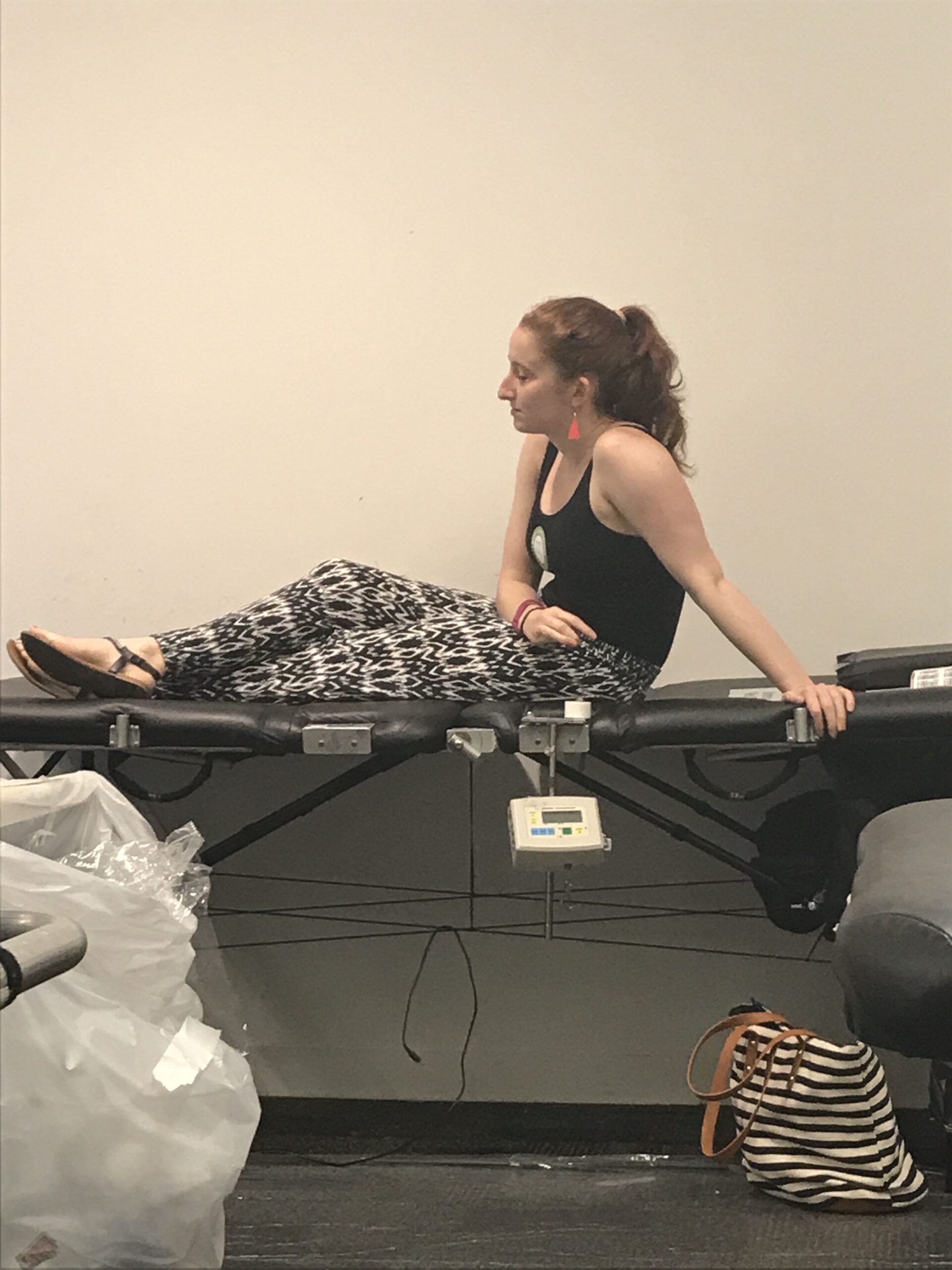
How much do you have to weigh to donate blood? You must weigh 110 pounds to donate blood.
How often can you donate blood? You can donate blood every 56 days, or every eight weeks.
Can you donate blood if you have a tattoo? Yes, but it has to be 12 months after you got the tattoo.
How much blood do you donate? You donate about one pint of blood.
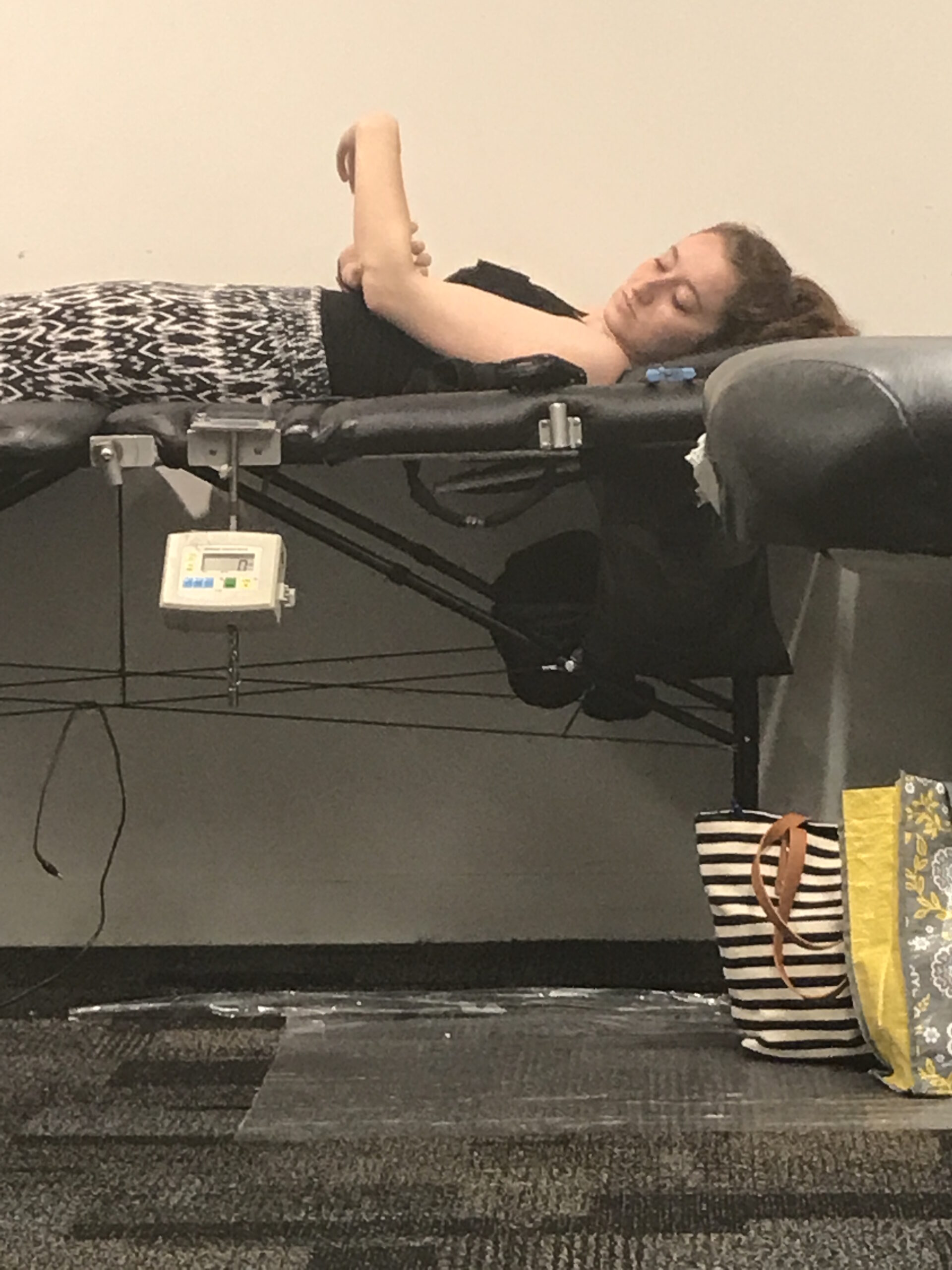
Can you donate blood if you smoke? Yes, unless smoking has given you unusually high blood pressure.
How old do you have to be to donate blood? You have to be 17, or 16 with a parent's consent (only if allowed by your state's law).
How long does it take to donate blood? The whole process can take around an hour, but the part with the needle in your arm only takes about 10 minutes.
What It's Like Donating Blood For The First Time
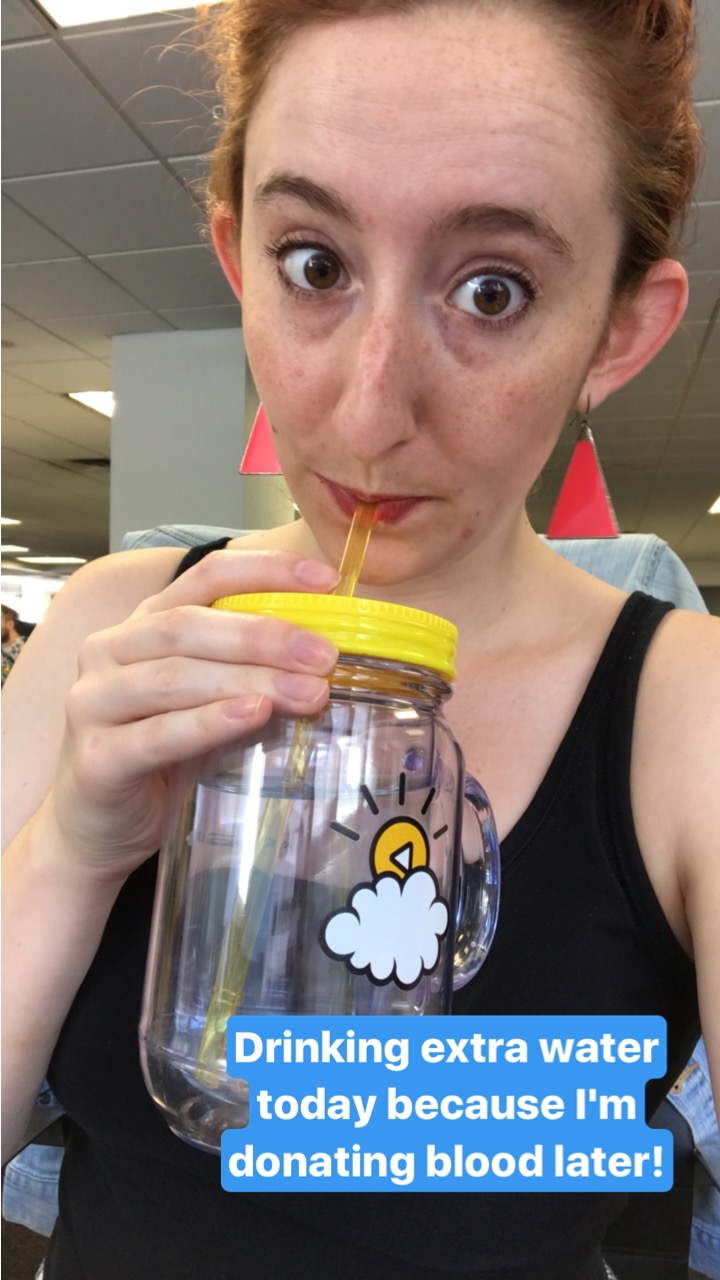
With all sorts of information about donating blood under my belt, it was time to book my appointment.
I went online and made my appointment, and I was really confident and excited about donating.
As the day approached, I got more and more excited — I really felt ready to finally be a blood donor.

On the day of the donation, though, I realized I was more worried than I thought I would be.
It wasn't so much that I was scared, but more nervous that I didn't know exactly how it would go.

When I got on the train in the morning, I looked up what I should do the day of the donation.
In accordance with what I found online, I drank an extra 16 ounces of water and ate some iron-rich foods.
Being well-hydrated makes it easier for the doctors to insert the needle.
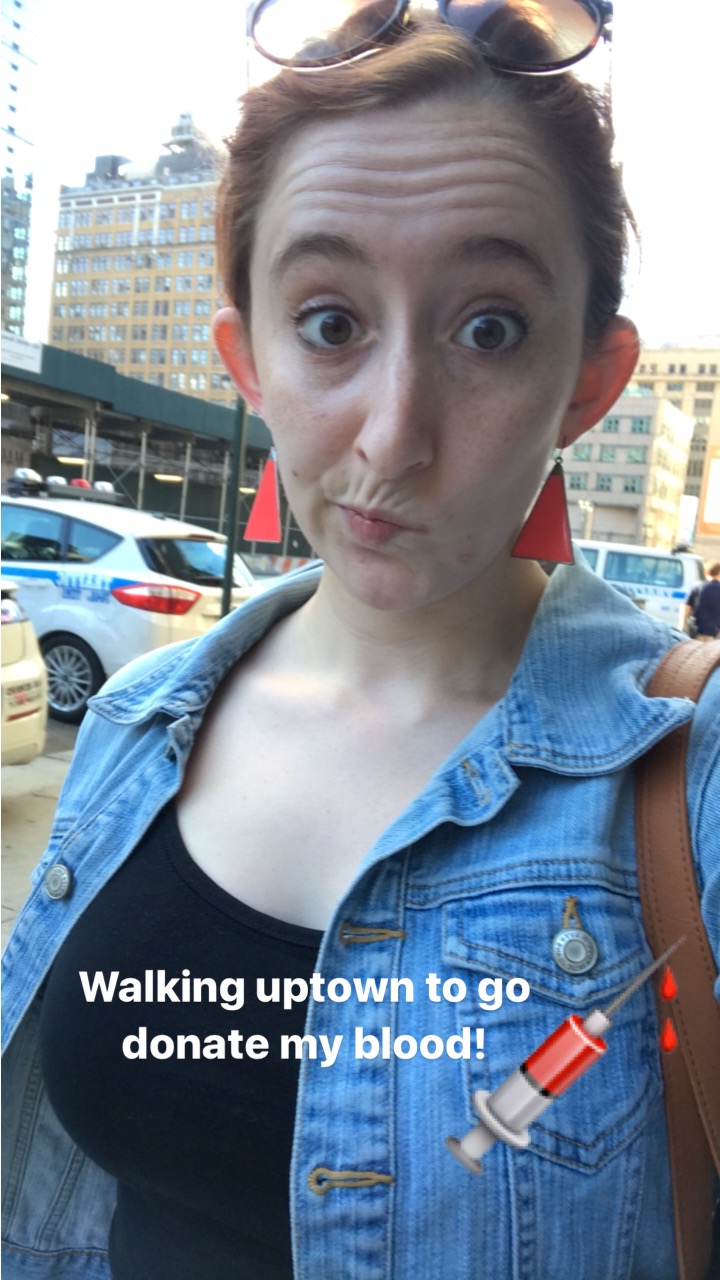
When the work day ended, I walked from the LittleThings office to the American Red Cross.
While I was walking, it gave me some time to think about the blood donation process.
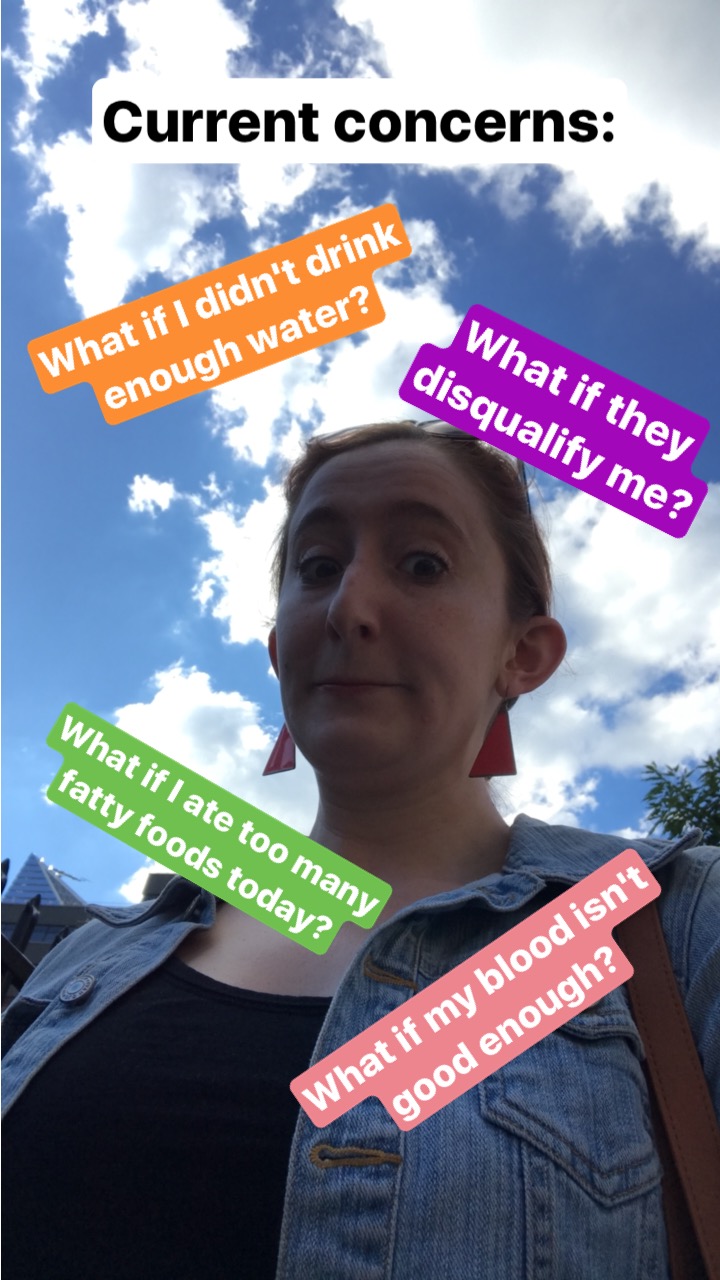
Mostly, it gave me time to worry.
Since it was my first time donating blood, I had asked a bunch of people about what I should expect, as I was still a little concerned about certain things (luckily, it was all fine).
At The Blood Drive
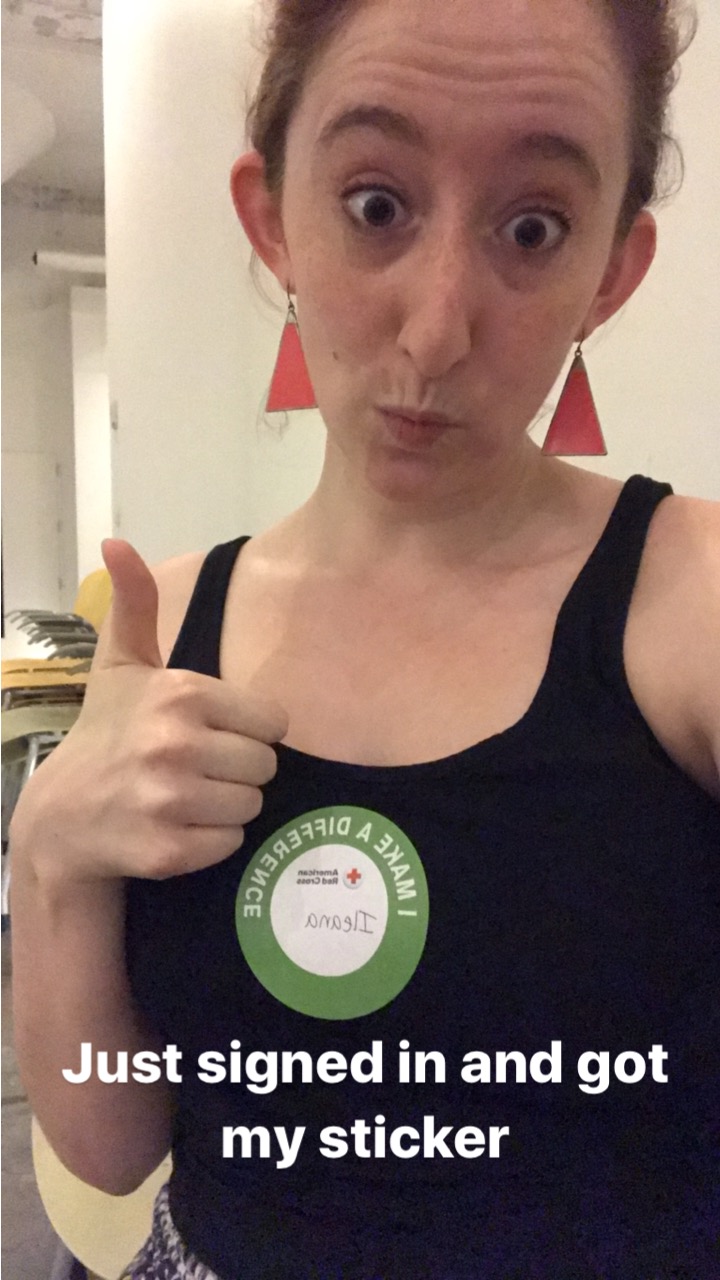
Once I found the American Red Cross center, I signed in and took a seat to wait my turn.
The Red Cross explains, "Blood donation is a simple four-step process: registration, medical history and mini-physical, donation and refreshments."
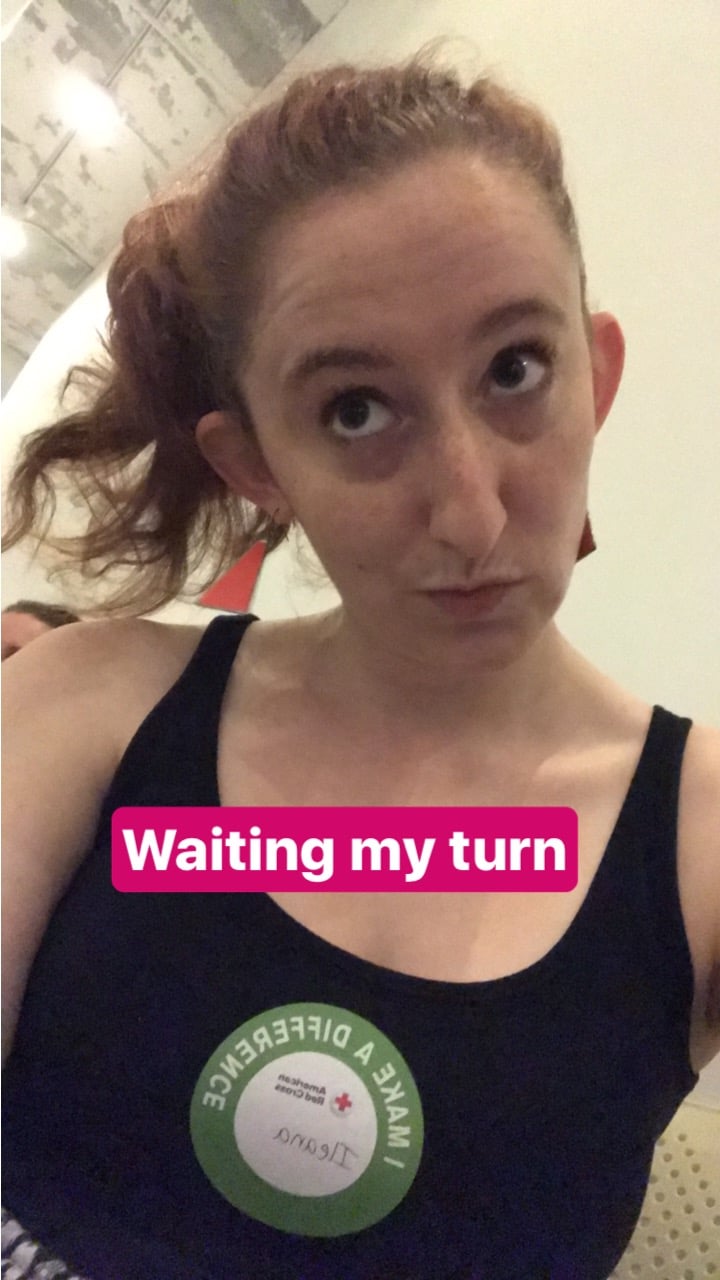
I won't lie, there was a decent amount of just sitting around and waiting.
After I checked in, I had to wait my turn to be taken into the first room — this is where they'd get my medical history and do my mini-physical.
In The Pre-Donation Room
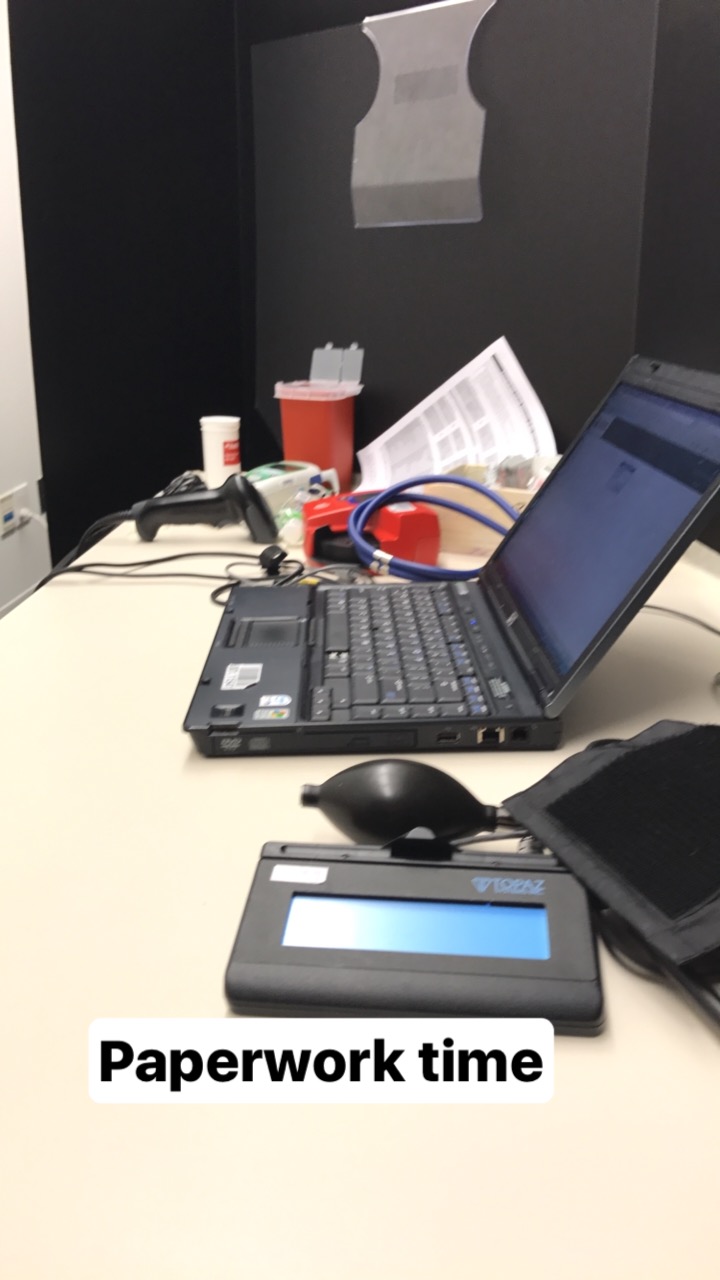
Finally, they called me into the first room, where they put me in a little cubicle to take down my medical history.
I had to answer a quick questionnaire about my health, and they asked a few simple questions.
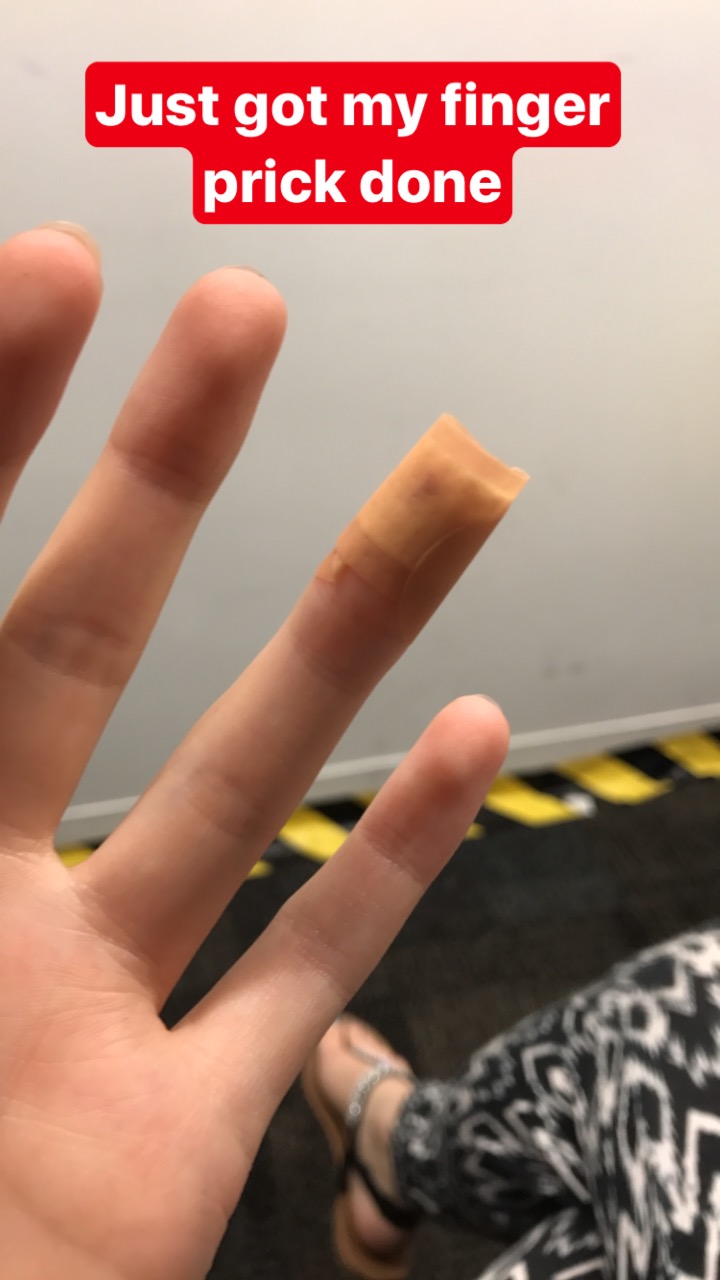
While in this first room, they also did the mini-physical.
They checked my heart rate and blood pressure, then took my temperature.
Next, they did a finger prick to test my blood's iron levels.
In The Donation Room
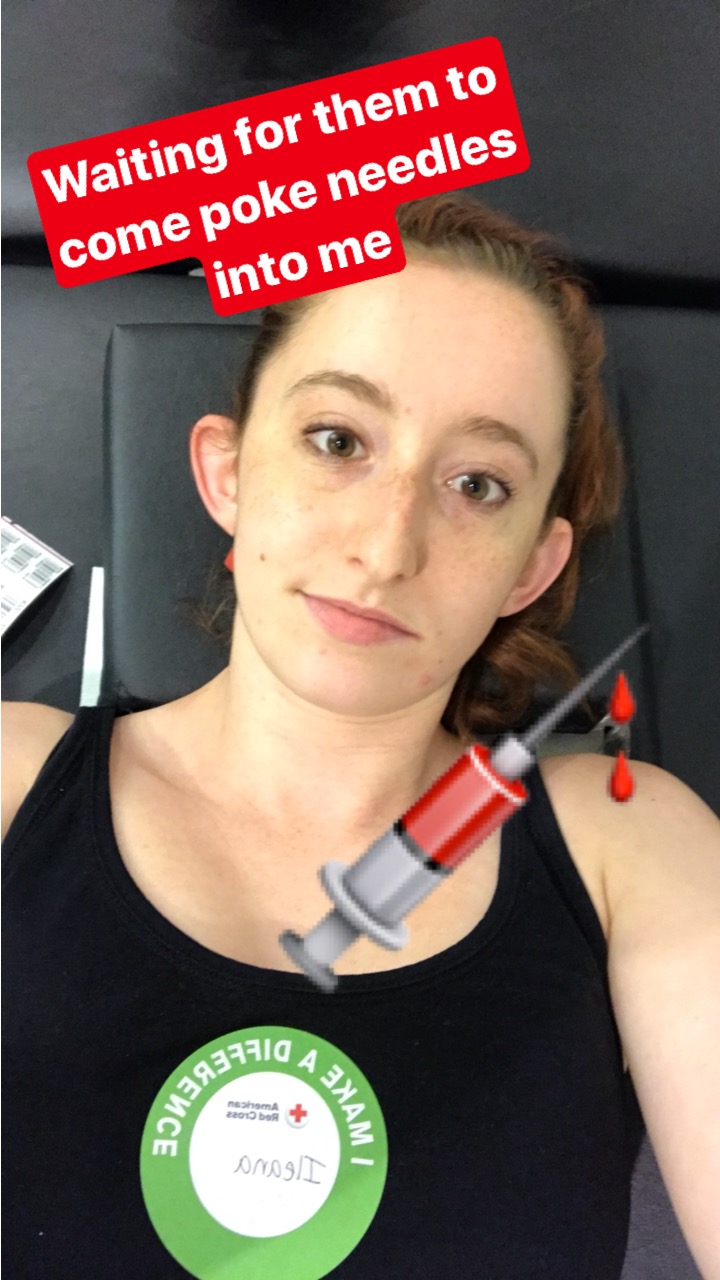
After I finished all the pre-donating steps, I went into the donation room and sat down on one of the donation tables.
Then there was more waiting… and more worrying.
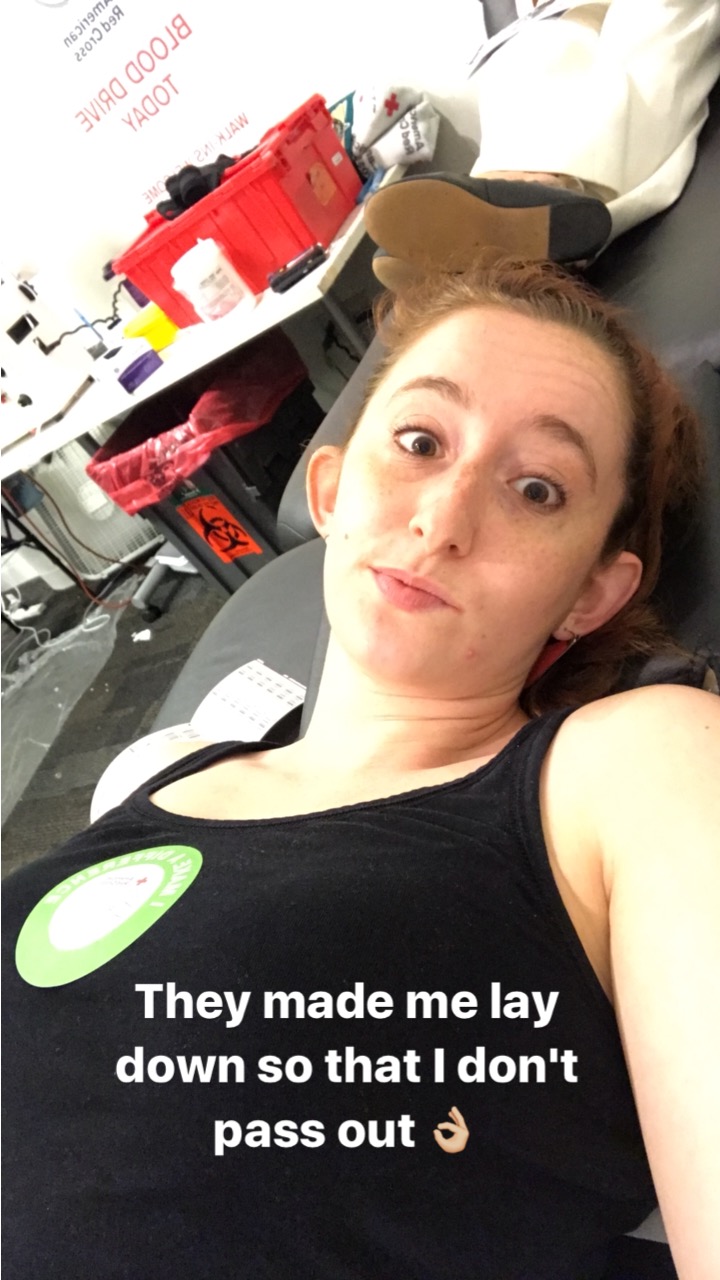
The nurse came over to check on me, then he told me that since it was my first time donating blood, he'd have me lie down so I wouldn't pass out.
This was also the point where he looked at both of my arms to see which had better veins.
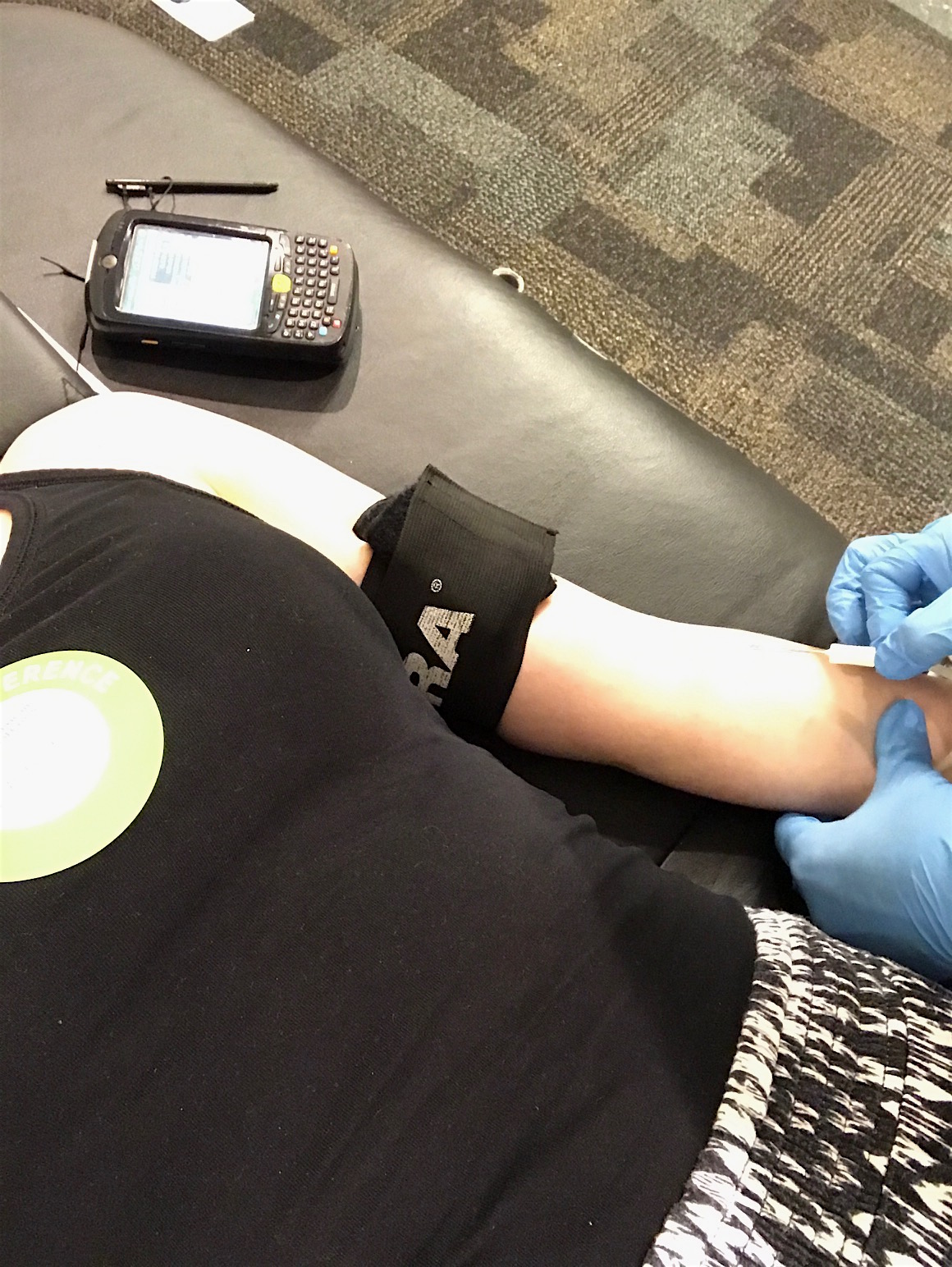
Eventually, it was my turn to actually start donating. I'm not afraid of needles or anything, but I also wasn't exactly looking forward to getting poked.
The nurse wrapped my upper arm, rubbed my inner elbow with iodine, put on gloves, then grabbed the needle.
Before inserting the needle into my arm, he taped the tube that would transport the blood to the bag onto my forearm.
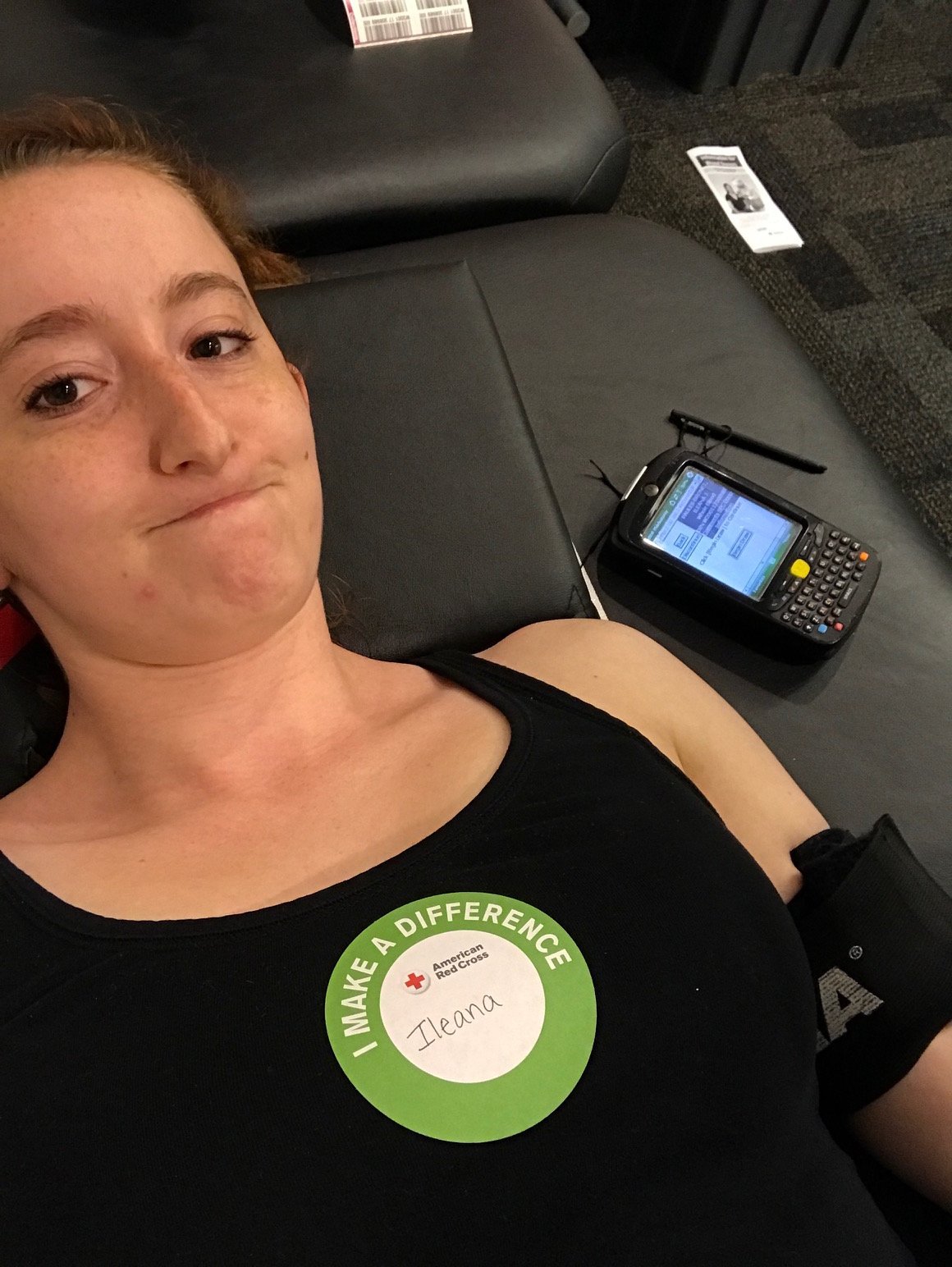
Then it was finally time for him to poke me with the needle. Yes, the needle was a little bit bigger than a needle for a regular doctor's blood test, but not significantly.
Instead of directly watching him put the needle into my arm, I took selfies. This was the face I made at the moment the needle entered my skin.
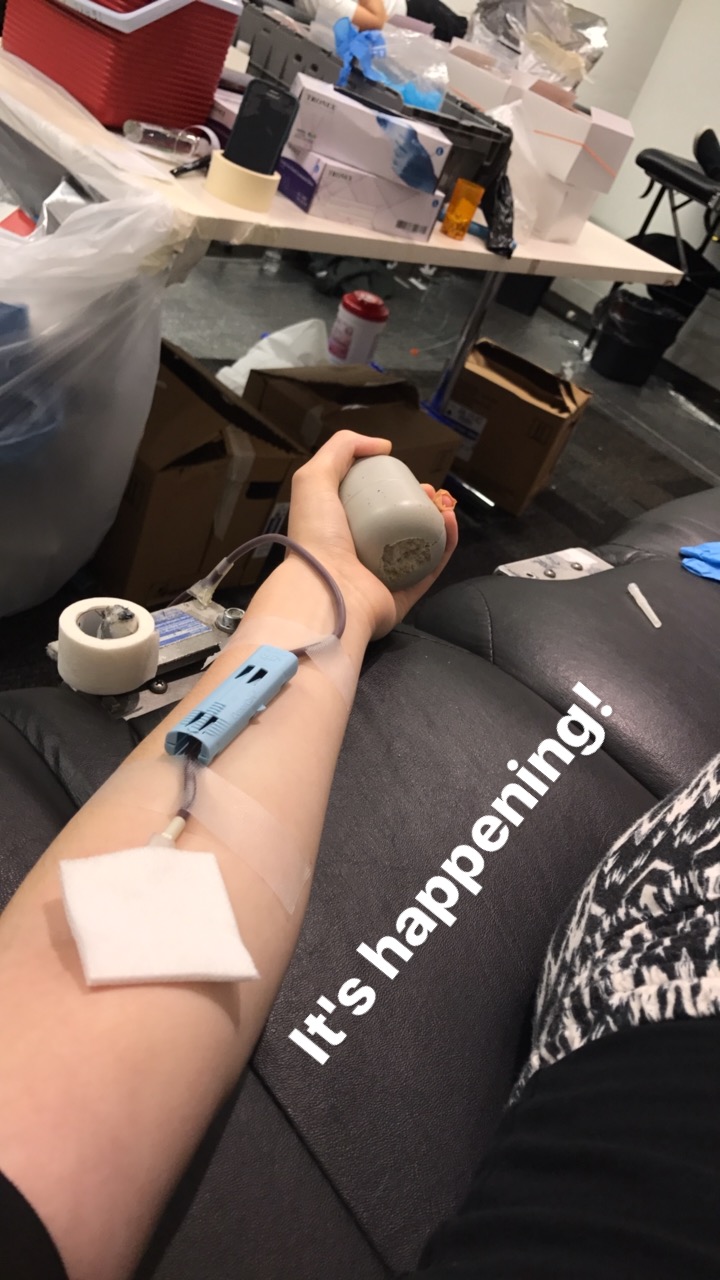
I won't lie, it did hurt a bit — but it was nothing I couldn't handle.
The needle was uncomfortable for about 10 seconds, and then I couldn't really feel it anymore.
They had me squeeze a stress ball hard as they inserted the needle, and then gently as the donation started; the action of squeezing pumps your blood more quickly.
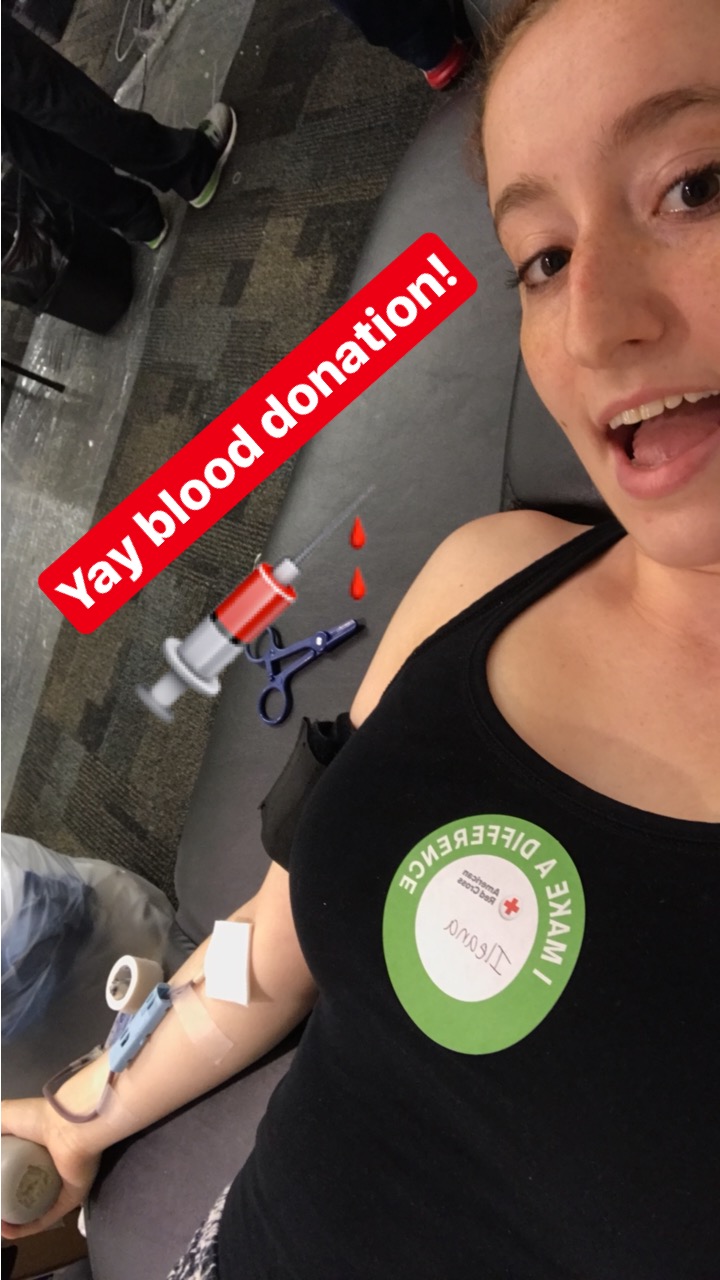
I was worried that I'd start to feel lightheaded or nauseous, but I was completely fine — just a little bored.
Because I was lying completely flat, it was hard to hold my phone (like everyone else was doing), so I tried to just get comfy.
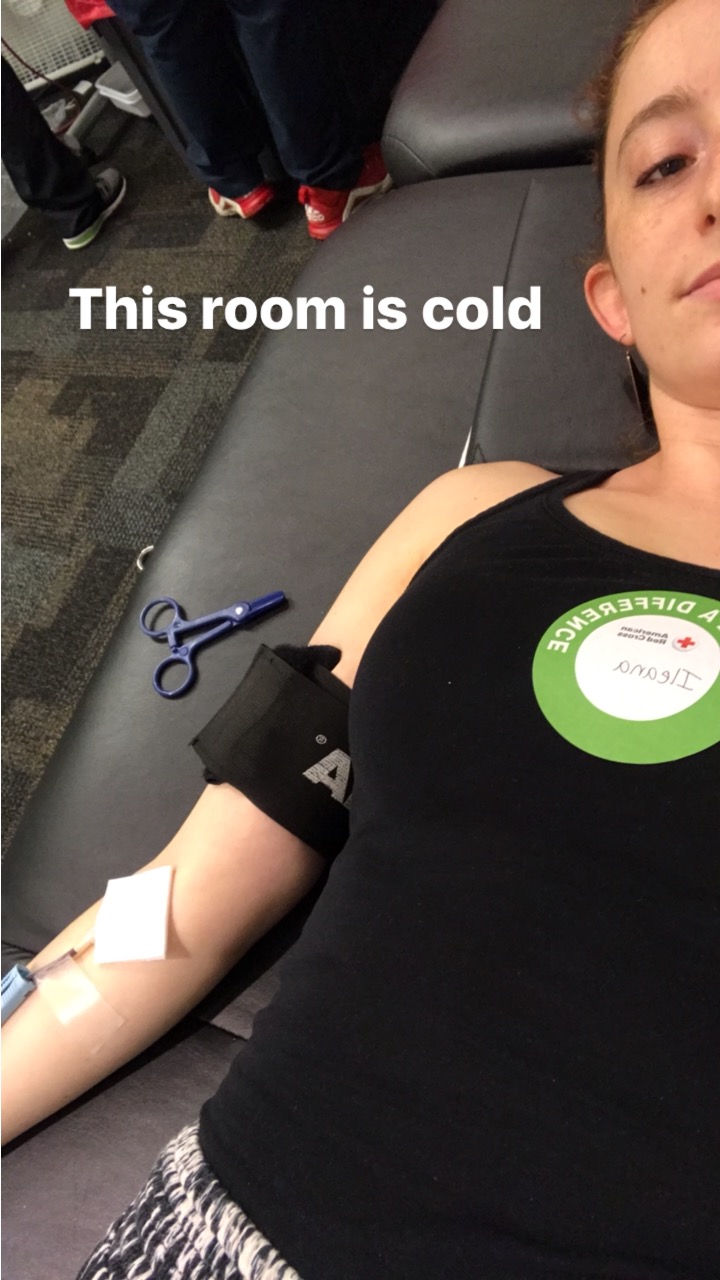
As you can see in the photo above, my biggest complaint while I was donating blood was that the room was cold.
According to the American Red Cross, the most common reasons people say they don't want to donate are that they "never thought about it" and that they "don't like needles."
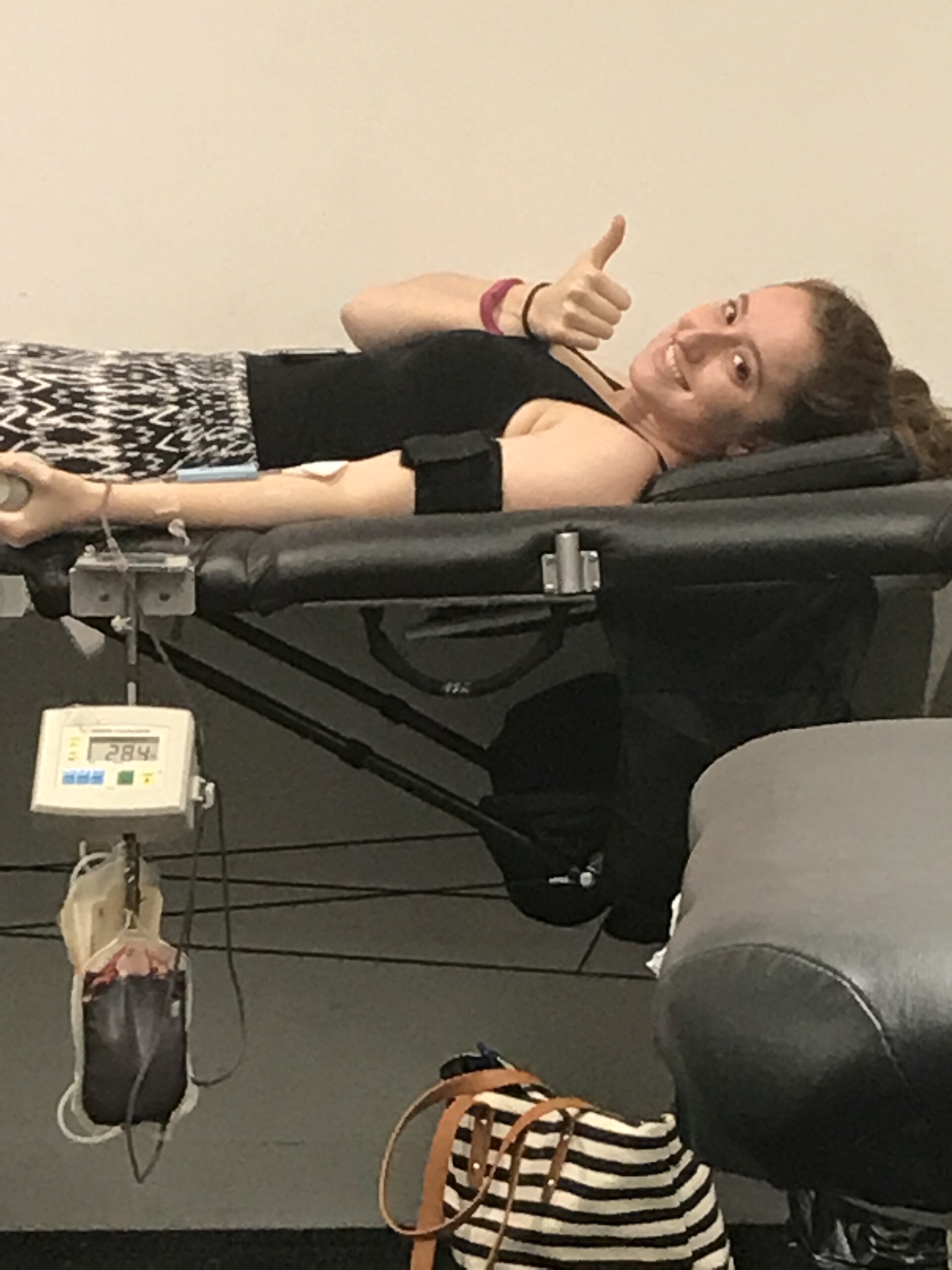
So, here's what I want to say to people mulling over these two things:
To those who've "never thought about it," think about it!
And to people who "don't like needles," just be brave — sure, there's a needle, but it's nothing you can't deal with.
The anticipation is also worse than the actual jab.
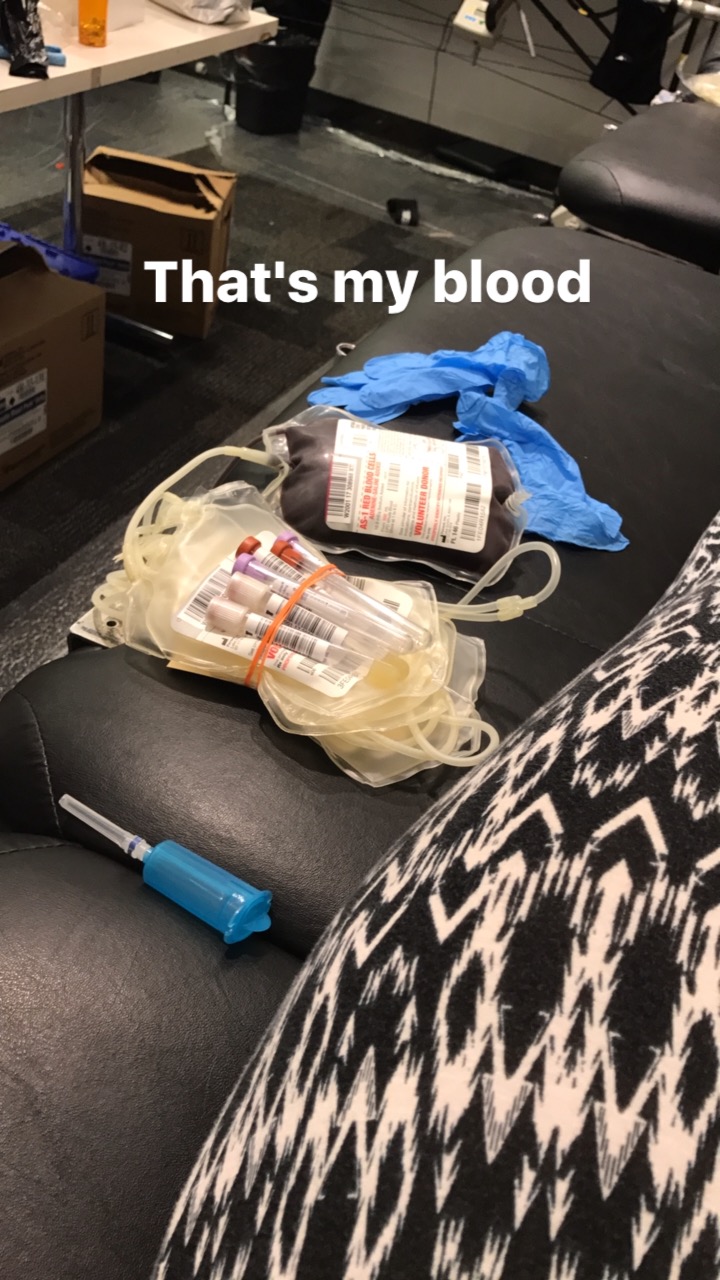
After my blood bag was full (which only took about 10 minutes), the nurse came back over to take the needle out and unhook me from the tube.
It felt pretty unreal to see all the blood that had come out of me, and I was happy to know that it was going to a good cause.
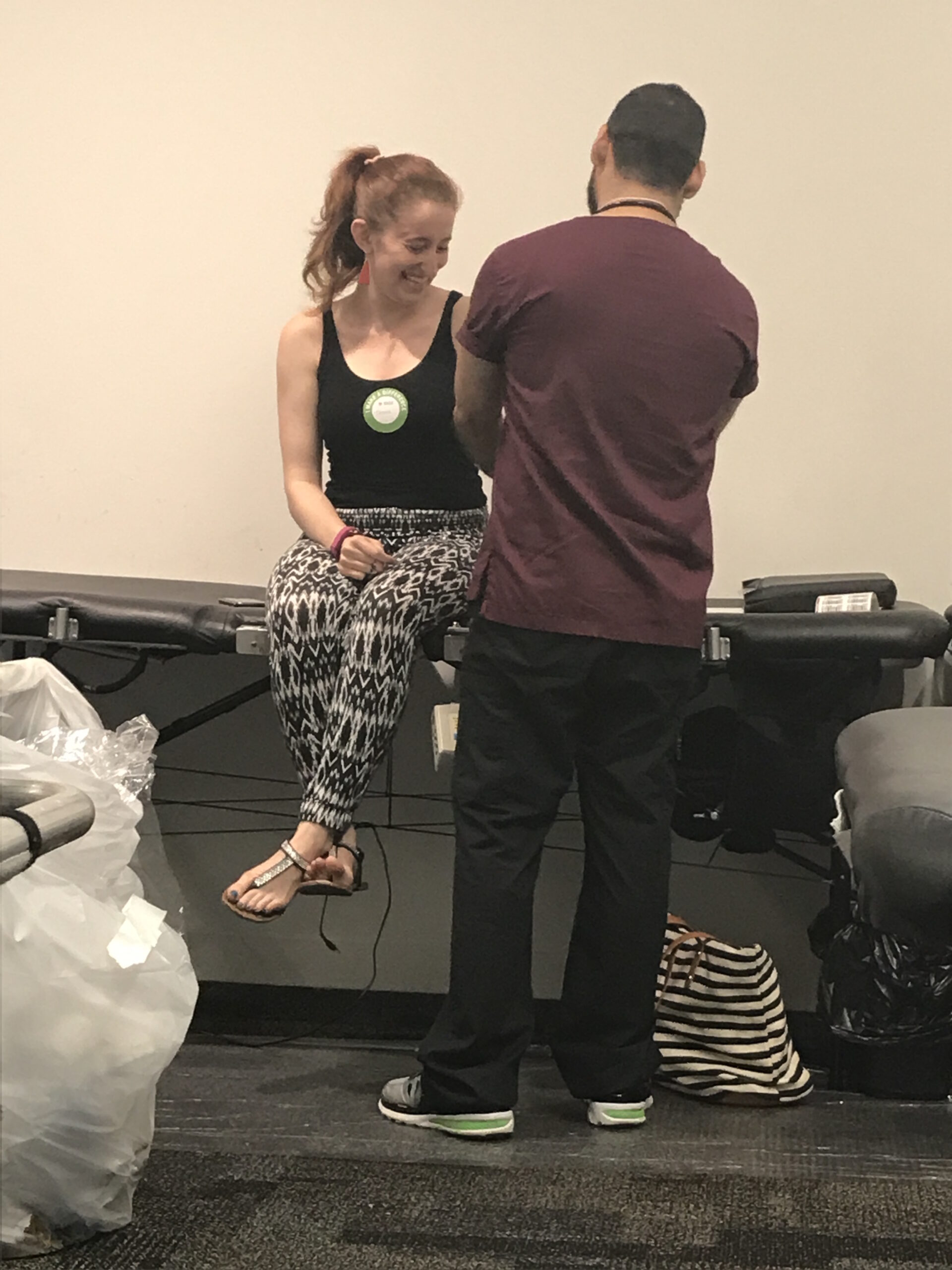
Once I was totally unhooked and done with the donation, the nurse told me to head over to the chairs on the other side of the room to get some juice and cookies.
But this part was by far the most disappointing moment of the whole experience…
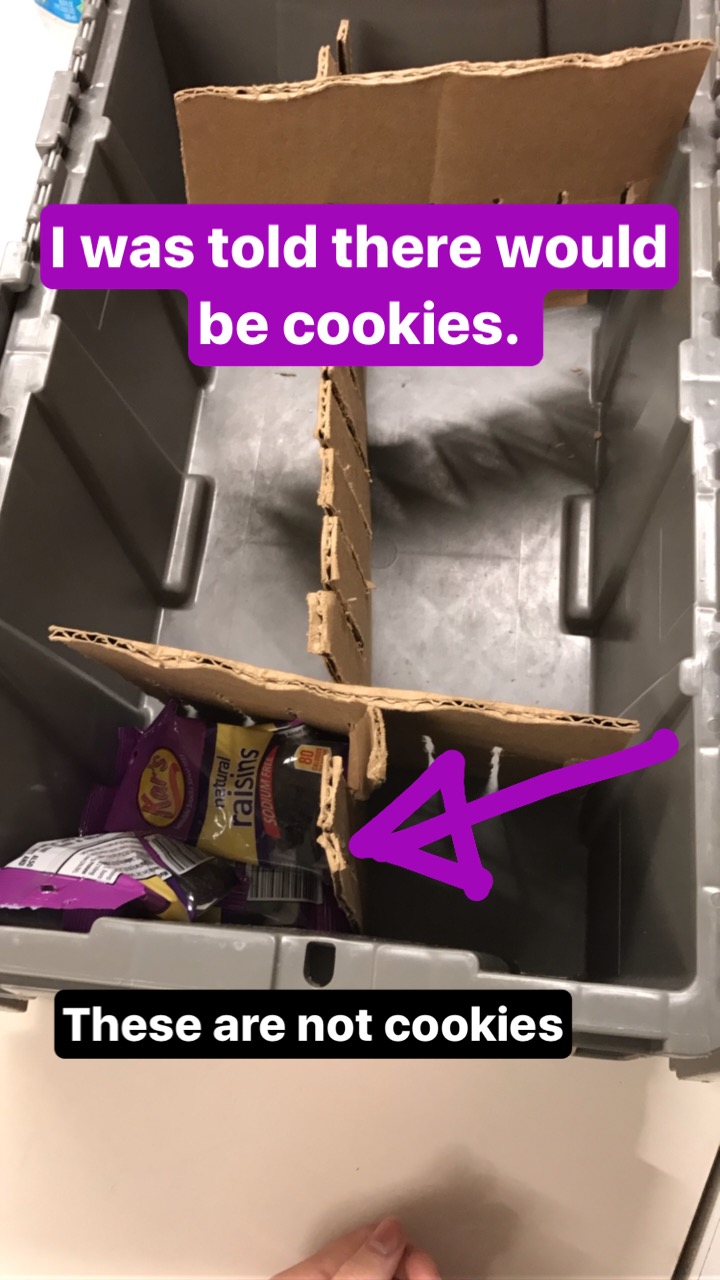
There were no cookie! Can you believe it?
I was so upset when I looked in the box and only found raisins. I grabbed a juice and sat for a few minutes to regain some blood sugar.

Since I was so disappointed about the cookies, my boyfriend offered to take me out for dinner.
Since the whole donating process had taken over an hour, we were definitely hungry.
Final Conclusions
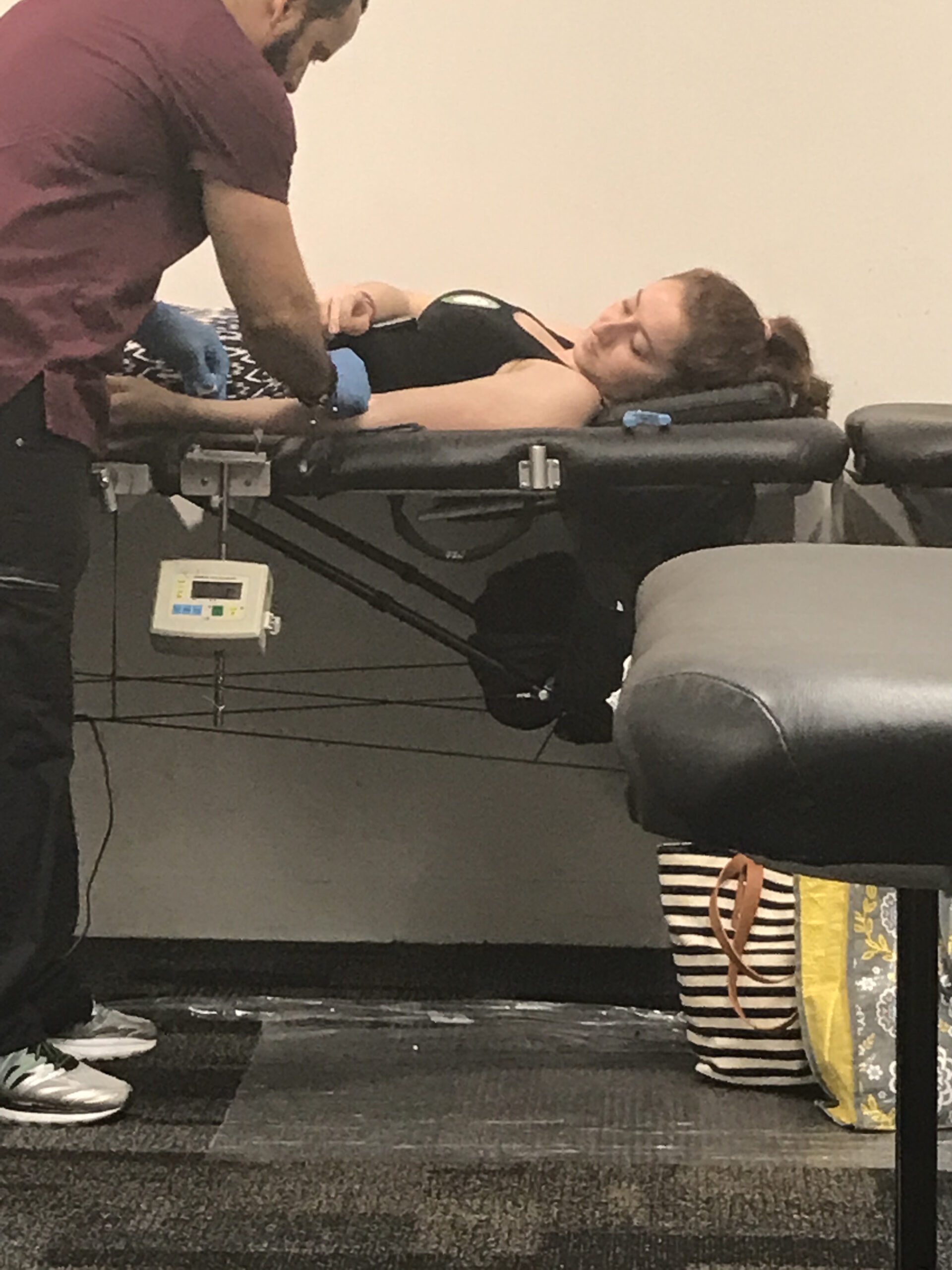
The entire process of donating blood was definitely a positive one — and I'm definitely going to do it again.
If you've ever thought about donating blood, you should just bite the bullet and do it! They always need more blood donors, and your blood could truly help save someone's life.
Please SHARE this article with your friends — everyone should know more about the importance of donating blood!




